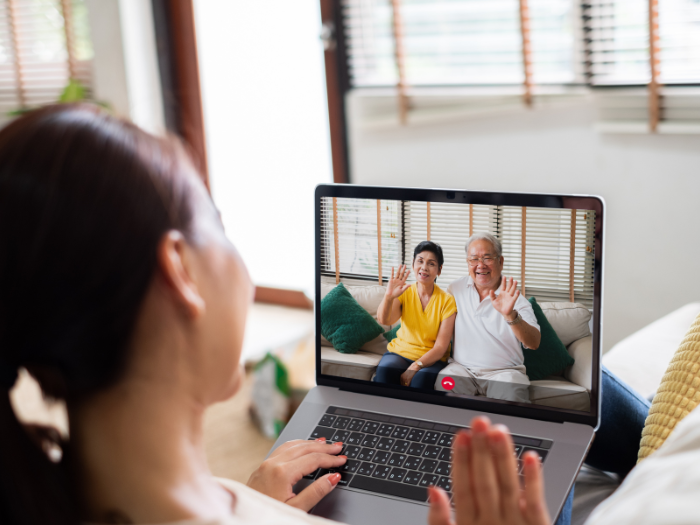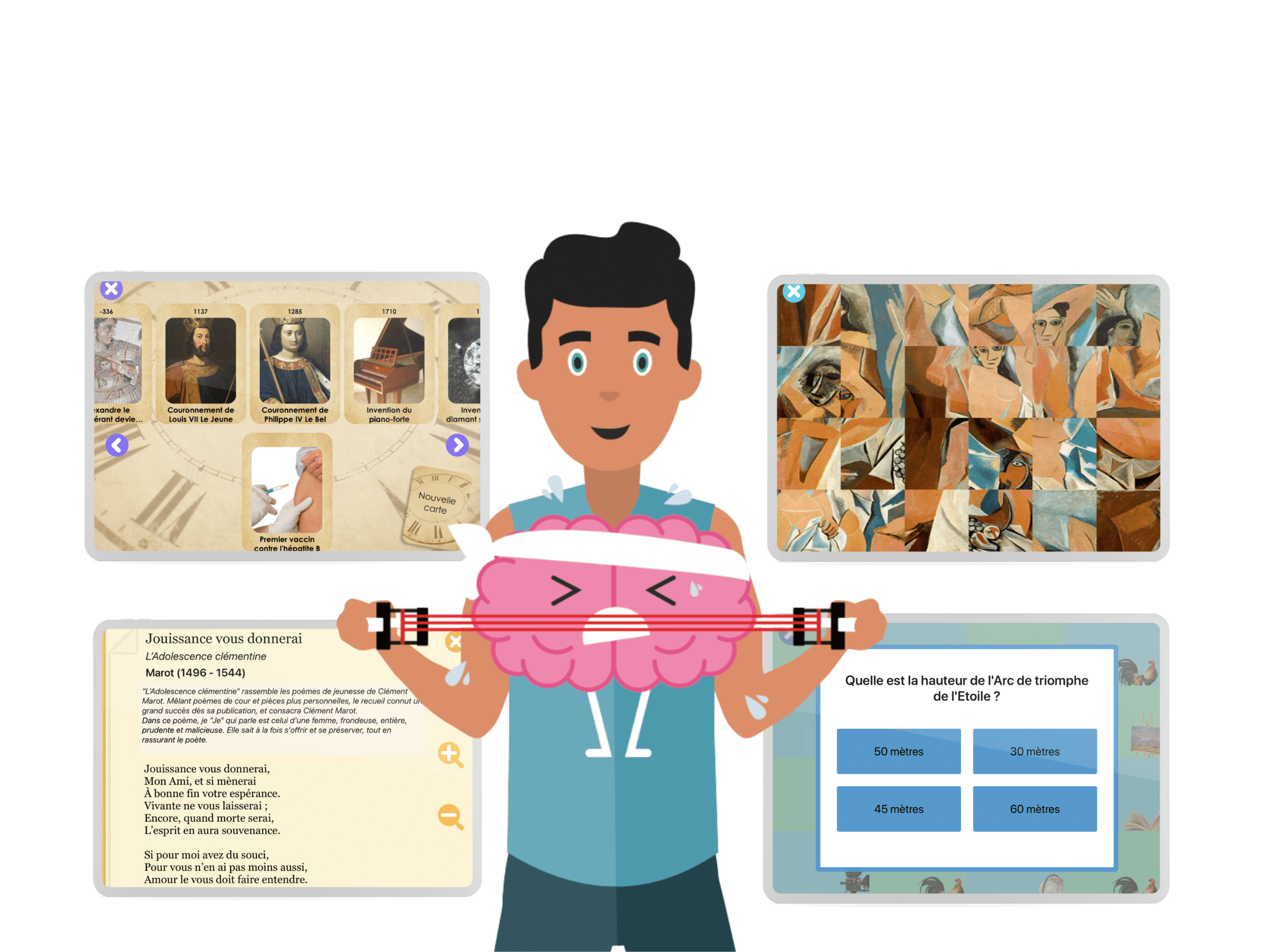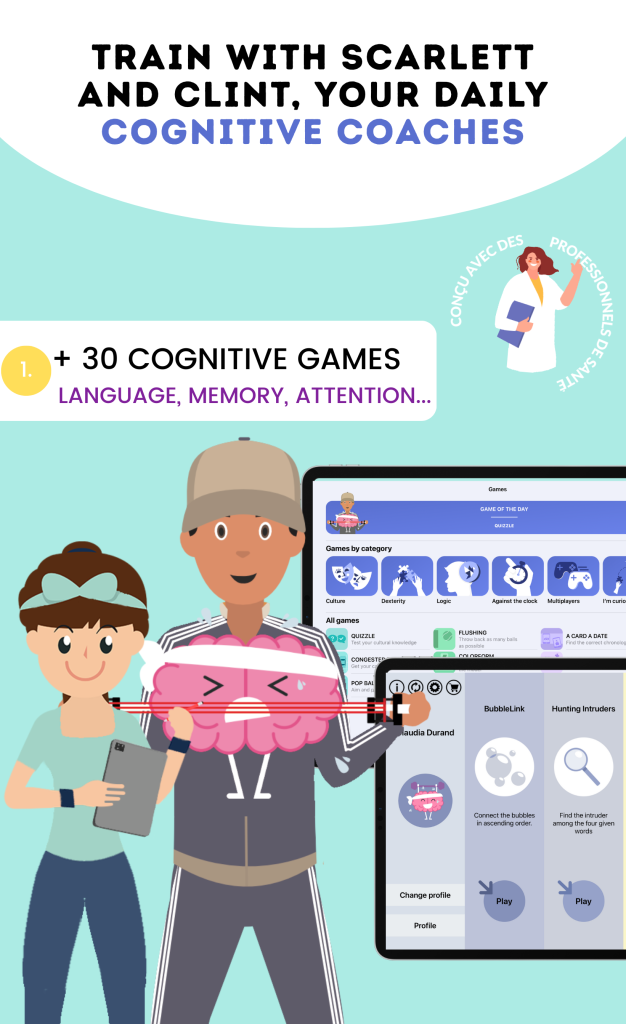Technology accompanies us in all areas of our lives. We use it for work, for traveling, for online shopping, and to stay in touch with friends. So why not use it to stay in contact with family as well?
When parents become elderly, it is the children who must start taking care of them. Sometimes this is difficult because of work, children, or simply living in different cities. Therefore, it is challenging to visit one’s parents. A video call can help us in this situation as it allows us to stay in touch from a distance.
New technologies allow us to maintain constant contact with our loved ones. They foster moments of happiness with seniors. However, it is important to turn to suitable solutions. There are different ways to make a video call or FaceTime with an elderly loved one. Let’s take stock!
1. Video call or FaceTime: what is it really about?
Video calls or FaceTime gained popularity during the lockdown period. Indeed, the lockdown made us understand the importance of relationships. That’s why we found a solution to overcome distance. A video call or FaceTime allows us to see the other person’s face, making the exchange more genuine.
What exactly is a video call?
First, we must say that a video call relies on the principle of videophone. In this term, we can find words like television and telephony. In practice, this means that we can see the other person during the conversation. This is a revolutionary method that allows you to connect with an elderly parent while having the opportunity to see them. It feels as if you are in the same room. Video calls are made through a mobile phone screen, a computer, or a tablet.
Moreover, this technique uses applications, a mobile plan, or a compatible 3G or 4G smartphone.

What is FaceTime?
FaceTime is a videoconferencing application developed by Apple. It is useful because this application allows you to contact your loved ones at any time.
When you don’t have time to visit an elderly parent, FaceTime becomes an interesting intermediary. This is a free application necessary to keep in touch with your loved ones. FaceTime works for free on iPhone and iPad.
The action of FaceTime depends on the device the user has. If you have an iPhone, it will be done in the “Settings” option. The same goes for an iPad.
Using FaceTime
Apple designed this application to make it easy for everyone to use. The user must act with knowledge. First, the person using an iPad will need the FaceTime email of the individual they wish to reach. When it comes to an iPhone, it is rather the phone number that you will use.
On the other hand, note that to answer a FaceTime call, you proceed as with a voice call. You just need to click on the screen to start the conversation. However, this operation is not always easy for some seniors. That’s why experts have developed tools dedicated to elderly people.
2. Finding an effective tool for video calls or FaceTime with an elderly parent
Not all seniors know how to handle smartphones or smart phones. Why not offer them an appropriate solution?
Technologies are not only adapted for young people. On the contrary, today there are more and more elderly people using smartphones or tablets.
An innovative tablet for your elderly parent
Elderly people often have difficulties using new communication technologies. Hence the interest in providing them with a tool that adapts to their needs. Fortunately, experts have thought of them by putting effective tools on the market for video calls with people. For example, we think of tablets. But it is not just any electronic or digital tablet.
Prefer a tablet for video conferencing or FaceTime that is easy to use. You can choose a model where your elderly parent will not have to touch their screen to start the conversation. The system is designed to trigger automatically.

Setting up FaceTime on a computer or iPad
These next-generation tools can help you maintain connections with your elderly loved ones. This is possible as long as you set up FaceTime on them. You can proceed as follows. You can create an account on an iPad computer or a Mac computer.
Of course, you will need an Internet connection for this setup. An icon appears immediately when FaceTime is installed. Go to the “Contacts” option to display the list and select a contact. The video appears each time a contact accepts the call. For an elderly person, it is possible to simplify the use of FaceTime. For example, you can disable automatic updates.
The advantages of using a specialized video application for seniors
At 80 or 90 years old, one does not have the same vigor as a young person in their thirties. Seniors have difficulties easily handling applications. However, a specialized video application simplifies life. It is better to invest in such an application if your elderly parent does not know how to use a smartphone.
Some elderly people have vision or hearing problems. This is the time to provide them with a means of communication more suited to their situation. Others, on the other hand, suffer from memory disorders.
3. Choosing the right video call solution for an elderly parent
You will need to make the best choice from this range of video applications. You can make your selection based on the age of the elderly parent.
The LiNote application
It was developed to meet the needs of people over 80 years old. It has an automatic pickup system. It is a simple solution intended for a loved one who has difficulty pressing a screen or a button. The advantages of calls via LiNote are numerous. Indeed, from this application, there is no button to press to answer a potential video call. Another advantage is that the application allows receiving messages and photos. You can share memories of your vacation moments with your elderly loved one.
The Visiofixe application
Like LiNote, Visiofixe allows you to make a video call with family members. Visiofixe is mainly aimed at younger seniors. It should be noted that this application is compatible with hearing aids. It uses a Bluetooth function in this case.
The Komp computer
This videoconferencing communication solution is indicated for individuals over 70 years old. It works with a single button. The Komp computer operates with an automatic pickup system. You can receive photos.
4. Combining pleasure with relationship
Video calls are certainly very useful for maintaining relationships with loved ones. On the other hand, it can happen that you don’t know what to say, have moments of silence, or that your elderly loved one gets tired quickly. One solution may be to use games to maintain a positive relationship.
The CLINT application
CLINT is an application with over 30 cognitive games to stimulate all cognitive functions. The proposed activities are fun and cultural, so you can enjoy them together. Thanks to the games, the senior will also evoke memories and can share their experiences.
Your loved one can play alone at home, on their tablet or smartphone, and you can talk about it together during calls. Or you can play together on FaceTime.
CLINT and FaceTime
In the CLINT application, there are certain games that can be played together, via video on FaceTime. You can therefore call your loved ones and share a fun moment. You can participate in the call and thus in the game with four people. You can bring the whole family together.
You can play in collaborative mode, thus playing together to achieve the goal. You can also play in competitive mode, thus one against the other.

Brain training programs
There are many ways to exercise memory and cognitive functions. Daily practice of brain exercises reduces the risks of neurological disorders, as some programs act on all cognitive functions.
The CLINT brain training program has been specifically designed for adults to keep the brain healthy through fun and stimulating brain exercises. It includes over 30 cognitive games and targets concentration, focus, reflexes, languages, and many other cognitive functions.

5. Training family caregivers in digital skills: a lever for the autonomy of seniors
Even though digital tools are becoming increasingly accessible, they can still be intimidating for elderly people. That’s why it is essential that their loved ones – children, grandchildren, caregivers – are trained to effectively support them in this digital transition.
Why train loved ones in digital support?
-
Better guide seniors when handling a tablet or an application like FaceTime or LiNote.
-
Gain autonomy by learning to easily set up a device or solve small technical issues remotely.
-
Prevent the digital isolation of elderly people by ensuring regular technical support.
-
Promote intergenerational transmission: children or grandchildren become the “digital coaches” of seniors.
Concrete examples of useful training:
-
Municipal or associative workshops on the use of adapted tablets (like those from DYNSEO).
-
Step-by-step video tutorials to learn how to install and use video apps (e.g.: create a contact, make a call, answer).
-
E-learning sessions for caregivers offered by associations or health platforms (for example, France Alzheimer’s or the Red Cross).
-
Applications with simplified interfaces offering a “caregiver mode” for remote guidance (like Komp or Ardoiz).
Tips for supporting a senior in digital learning:
-
Be patient and value every progress to avoid discouragement.
-
Prefer short but regular sessions, focusing on one feature at a time.
-
Favor simple visual aids (pictograms, colored buttons, large fonts).
-
Involve the senior in concrete uses: calling a loved one, looking at a photo, following news.





